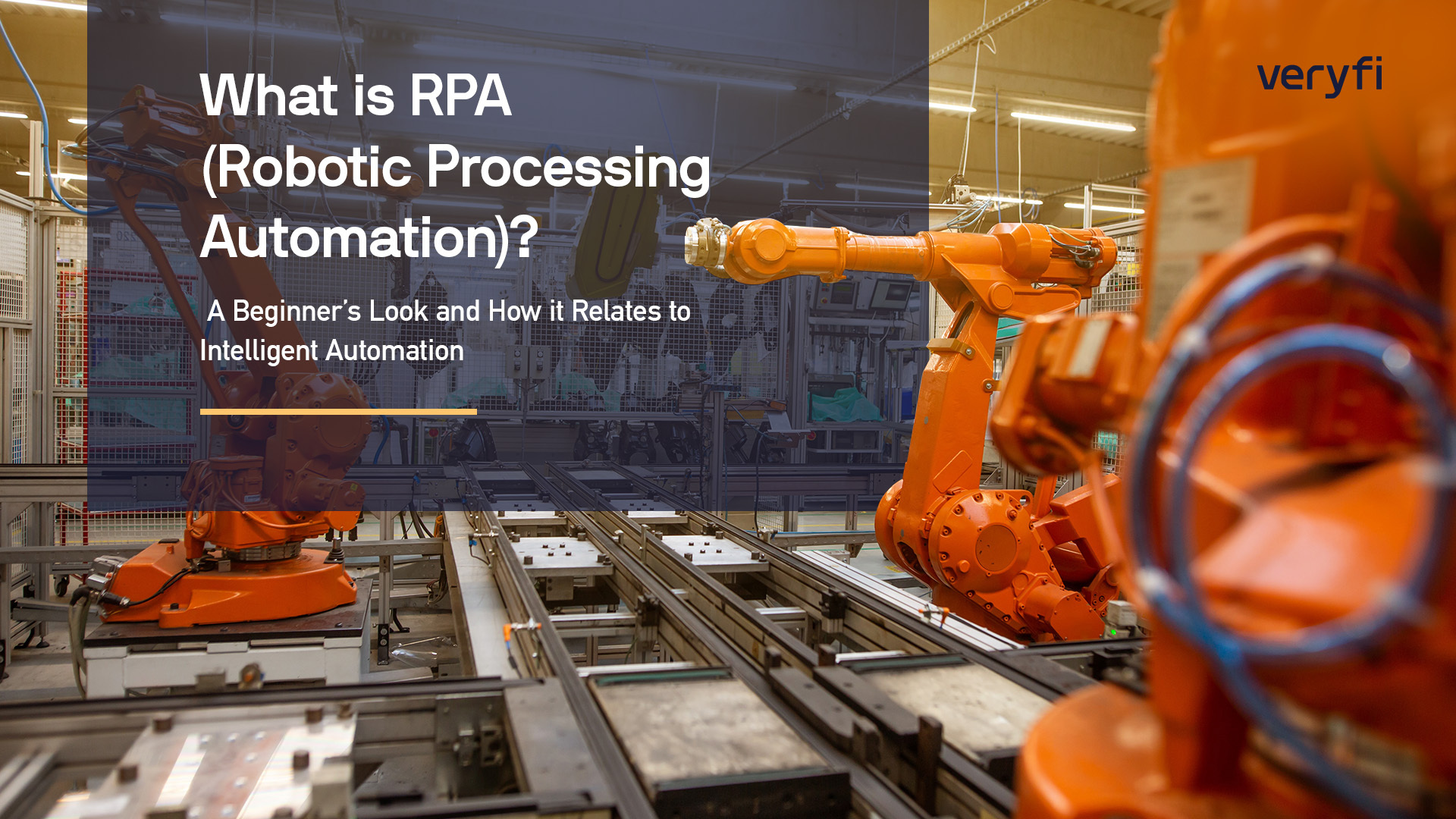A Beginner’s Look and How it Relates to Intelligent Automation
When you first hear “robotic process automation”, books like Brave New World may come to mind. Luckily, robotic process automation (RPA) doesn’t involve dystopian plots with robot takeovers. In fact, there are no physical or mechanical robots involved because it’s referencing automation software. The “robot” refers to software robots running on a physical or virtual machine so you can breathe a very heavy sigh of relief – whew!
So now that we got that out of the way, let’s dive in. Robotic process automation (RPA) is a technology that mimics the way humans interact with software to perform high-volume, repeatable tasks. This includes all those tedious, repetitive, manual (and painful) back-office tasks such as extracting data, filling in forms, moving files, etc.
What makes RPA technology so magical is that it frees up human resources. With no humans in the loop, you can spend your time doing more complex tasks like taking your product to market, breaking into a new market sector, or writing the next dystopian best seller.
RPA and Artificial Intelligence
Is RPA part of AI? The answer is no, however, RPA and AI can work together. When combined with AI and machine learning, RPA can capture more context. This is done with the use of optical character recognition (OCR) which can extract entities like names, invoice terms or addresses from text or handwritten documents. It can further put data into context to provide valuable insights. For example, using images to automatically estimate accident damage in an insurance claim picture.
How Does RPA Work?
RPA tools execute tasks that are rule-based and logical, and don’t require human understanding or knowledge. These tools automate processes by logging into applications, performing data entry, carrying out calculations, completing tasks, and copying data between workflows or applications as necessary.
If there are clear conditions associated with a task, such as “If this is true, do this. If this is false, do that,” then RPA is a suitable option regardless of the task type. RPA tools, however, do not learn and adapt as they operate, which is why integration with AI and ML is necessary for them to become more dynamic. In cases where specific aspects of a task change, such as a renamed form field or a modified data source, the RPA program will need to be reconfigured to ensure that it continues to function correctly.
Let’s say you traditionally input account numbers onto a spreadsheet and then run a manual report with particular filter criteria (TPS reports, anyone?). You can, instead, automate the process so those numbers are filled in ahead of time in a grid. RPA will then mimic your actions of clicking on buttons and setting up filters, and generate the report for you.
The Benefits of RPA
There’s the obvious benefit of avoiding death by copy and paste. This means more productivity, efficiency, and job satisfaction. For CIOs and other decision makers, RPA can help accelerate their digital transformation efforts and generate a higher return on investment (ROI) from their staff.
Here are the top benefits of RPA. For organizations, RPA technology can:
- reduce costs associated with manual data input
- streamline processing to eliminate errors
- drive better customer experiences by addressing customer needs at scale
- be easily implemented without changing an organization’s underlying IT infrastructure
The biggest benefit, however, is when RPA is paired with AI, ML, and OCR technology. This is when data can be put into context to provide truly valuable insights like with our insurance claim estimate example above.
Challenges of RPA
Enterprises are seeing the need to integrate RPA process automations in their IT systems. As discussed earlier, RPA automations can dramatically speed up a business process previously handled by humans, but bots can break when application interfaces or process workflows change. So the real challenge is knowing what to pair with RPA software. Remember it’s the RPA along with AI, ML, andr OCR that unlocks greater efficiency and data insights.
RPA Use Cases
Every industry has short, repetitive, manual processes that could benefit from RPA, but the highest adopters are companies with large back-office departments.
Some of the industries with the earliest and highest adoption of RPA include:
- Banking
- Financial services
- Insurance
- Telecommunications
- Customer Care
- Insurance
- Healthcare
- Manufacturing
- Finance
- Property Management
Mortgage lenders, for instance, use RPA to verify loan documents, and financial organizations are employing RPA for bank reconciliations. And thanks to the U.S. government’s recent mandate to shift its employees’ focus from low-value tasks to high-value ones, even federal agencies like NASA are starting to adopt RPA to reduce repetitive administrative tasks. Who knew RPA could help us get into space even more efficiently?
How to Decide Which RPA Tool is Right for You
RPA is appropriate for organizations looking to reduce the time employees spend on low-value activities, and improve the efficiency of daily operations. Though it is more limited in its capabilities than AI, RPA also costs less to implement. It can typically be overlaid on your existing IT infrastructure, or it may be embedded within a newly acquired software application. Neither option usually requires a complex integration process.
At Veryfi, we have paired our OCR technology with AI that has over 5 years of pre-trained learning. It can also be integrated with RPA solutions with just a few lines of code! This means that enterprises can upscale their operational efficiency quickly and at scale. Organizations use Veryfi for AP Automation, expense management, timesheets, and practice management. If you would like to see how Veryfi can free your team from tedious tasks, book a demo with our team.
